death toll
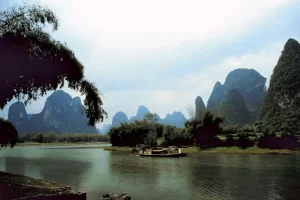 Apparently, earthquake documentation began about 4,000 years ago. That is a fact about which I had no idea. I’m sure the early documentation was somewhat primitive, because they would simply have to be recorded in journal of sorts. Many don’t realize that the process of measuring began nearly 2000 years ago, with the invention of the first actual seismoscope in 132 AD by a Chinese inventor called Zhang (‘Chang’) Heng. The device was remarkably accurate in detecting earthquakes from afar, and did not rely on shaking or movement in the location where the device was situated. Of some of the earliest recorded earthquakes, the deadliest occurred in China on January 23, 1556. While this quake was not the largest ever recorded, it was a powerful quake that rocked the province of Shaanxi and the neighboring province of Shanxi. The reason it was such a deadly quake was not the size, but rather the death toll, which was an estimated 830,000 people.
Apparently, earthquake documentation began about 4,000 years ago. That is a fact about which I had no idea. I’m sure the early documentation was somewhat primitive, because they would simply have to be recorded in journal of sorts. Many don’t realize that the process of measuring began nearly 2000 years ago, with the invention of the first actual seismoscope in 132 AD by a Chinese inventor called Zhang (‘Chang’) Heng. The device was remarkably accurate in detecting earthquakes from afar, and did not rely on shaking or movement in the location where the device was situated. Of some of the earliest recorded earthquakes, the deadliest occurred in China on January 23, 1556. While this quake was not the largest ever recorded, it was a powerful quake that rocked the province of Shaanxi and the neighboring province of Shanxi. The reason it was such a deadly quake was not the size, but rather the death toll, which was an estimated 830,000 people.
The 1556 Shaanxi quake was historically referred to as the Jiajing Great Earthquake because it occurred during Emperor Jiajing’s reign in the Ming dynasty. While death tolls might not be as accurate as they are today, the approximate death toll comes from local annals that also tracked 26 earthquakes in the region. Those records described the earthquake as being “starkly different” from others, saying that it leveled mountains, caused floods and fires that burned for days, and a drastically altered landscape. The annals estimated that some counties lost about 60% of their population.
Due to the inability to have accurate fatality recordings, the death toll is in question, but no one questions the 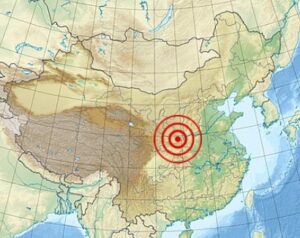 fact that the Shaanxi earthquake is considered the deadliest earthquake, because it is certain that the casualties are much higher than any other disaster. Following the Shaanxi quake, the second deadliest recorded earthquake was the 2004 earthquake and tsunami in the Indian Ocean that killed an estimated 230,000 people across Indonesia, Thailand, Sri Lanka and India. It is amazing to me that the next deadliest quake took so long to occur, considering the fact that making earthquake resistant structures didn’t begin immediately. Still, it is a blessing that many earthquakes don’t bring those huge death tolls.
fact that the Shaanxi earthquake is considered the deadliest earthquake, because it is certain that the casualties are much higher than any other disaster. Following the Shaanxi quake, the second deadliest recorded earthquake was the 2004 earthquake and tsunami in the Indian Ocean that killed an estimated 230,000 people across Indonesia, Thailand, Sri Lanka and India. It is amazing to me that the next deadliest quake took so long to occur, considering the fact that making earthquake resistant structures didn’t begin immediately. Still, it is a blessing that many earthquakes don’t bring those huge death tolls.
In the 1930s, the Richter scale was developed, and the magnitude of quakes became much clearer. Scientists theorized that the Shaanxi earthquake was likely between 8.0 to 8.3 in magnitude…definitely not the strongest ever recorded, but no less destructive. The most powerful earthquake recorded on the Richter scale was the 9.5-magnitude Valdivia Earthquake that struck Chile in 1960, according to the US Geological Survey (USGS). The seismic event created a tsunami which together killed an estimated 5,700 people…a far lesser number than the Shaanxi quake…amazingly. The 2004 Indian Ocean tsunami registered a 9.3 magnitude. So, the size of the quake cannot totally correlate to the death toll. The death toll is based more on the population in the area and the quality of the structures.
As to the Shaanxi quake, while it wasn’t the strongest recorded earthquake, its high death toll likely resulted from the destruction of the area’s densely populated communities and poorly constructed stone buildings. The people of the Shaanxi and Shanxi provinces responded to the disastrous quake by rebuilding in ways that would 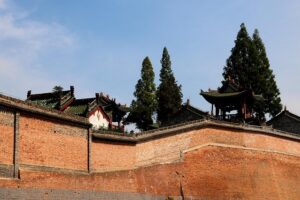 lessen the impact of future earthquakes, according to local records. Rather than us stone to rebuild, they used softer materials like bamboo and wood, which were more resistant to tremors and would cause less damage if knocked down again. They knew that they couldn’t prevent earthquakes, but they could make their impact less severe.
lessen the impact of future earthquakes, according to local records. Rather than us stone to rebuild, they used softer materials like bamboo and wood, which were more resistant to tremors and would cause less damage if knocked down again. They knew that they couldn’t prevent earthquakes, but they could make their impact less severe.
“At the very beginning of the earthquake, people indoors should not go out immediately. Just crouch down and wait for chances. Even if the nest is collapsed, some eggs in it may still be kept intact,” said earthquake survivor and scholar, Qin Keda, who wrote about his experience and came up with safety tips for people to follow in the event of another disaster.
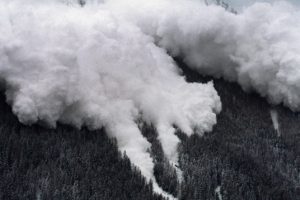
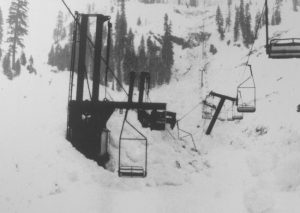 When we think of a series of disasters, it is usually tornadoes, earthquakes, or floods that come to mind. On February 11, 1952, none of the usual suspects were at fault in the series of disasters that began across central Europe. Snow storms don’t normally fall into the category of a series of disasters, but when a storm stalled over middle Europe during the first week of February of 1952, it dumped two feet of snow in parts of France, Austria, Switzerland, and Germany. In the vast area of middle Europe, life quickly ground to a standstill. Everything was closed, and travel was impossible. Germany recruited thousands of people and their shovels in an attempt to make the streets passable. In France several people died when their roofs collapsed under the weight of the heavy snow accumulation.
When we think of a series of disasters, it is usually tornadoes, earthquakes, or floods that come to mind. On February 11, 1952, none of the usual suspects were at fault in the series of disasters that began across central Europe. Snow storms don’t normally fall into the category of a series of disasters, but when a storm stalled over middle Europe during the first week of February of 1952, it dumped two feet of snow in parts of France, Austria, Switzerland, and Germany. In the vast area of middle Europe, life quickly ground to a standstill. Everything was closed, and travel was impossible. Germany recruited thousands of people and their shovels in an attempt to make the streets passable. In France several people died when their roofs collapsed under the weight of the heavy snow accumulation.
The worst of the storm, however, was felt in Austria, when a series od deadly avalanches took a heavy death toll. It was during the early hours of February 11, 1952, at a ski resort in Melkoede, when a huge mass of the newly fallen snow suddenly crashed down the mountain from above. There was no time to react, and no time to get away. They were trapped. Fifty people were sleeping at the resort. Twenty of them, mostly German tourists were killed, and another ten were seriously injured. In Switzerland and Austria, authorities issued urgent warnings about potential avalanches and some villages were actually evacuated. Nevertheless, all that was not enough. The next day there were more damaging avalanches. In Isenthal, Switzerland, hundreds of cattle and several barns were buried by an avalanche. In Leutasche, Austria, a twelve year old child was saved by people who risked their own lives in the face of a second avalanche that was poised to fall. Seven members of the child’s family were killed by the avalanche.
Avalanches kill more than 150 people worldwide each year. Most are snowmobilers, skiers, and snowboarders, and most deadly avalanches are triggered by the victim or someone in their party. Given that count, I suppose that the 78 people who perished in the February avalanches in middle Europe in 1952, might seem like a small number, but when you consider that these deaths occurred over a period of a few days, and the rest of the deaths by avalanches from that year were not included in that number, the death toll is staggering. This was not the worst avalanche death toll, however. That record, if it is right to call it such, goes to the Huascarán avalanche that was triggered by the 1970 Ancash earthquake in Peru. On 31 May 1970, the Ancash earthquake caused a substantial part of the north side of the mountain to collapse. The avalanche mass, an 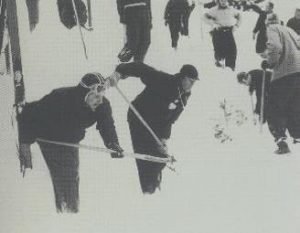
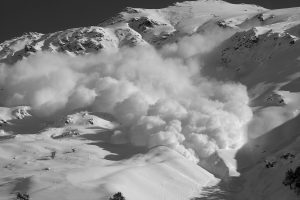 estimated 80 million cubic feet of ice, mud and rock, was about half a mile wide and a mile long. It advanced about 11 miles at an average speed of 175 to 200 miles per hour, burying the towns of Yungay and Ranrahirca under ice and rock, killing more than 20,000 people. This avalanche, in my estimation, might have been more of a landslide than an avalanche, and so it’s very possible that all of these people would have died had there been snow or not.
estimated 80 million cubic feet of ice, mud and rock, was about half a mile wide and a mile long. It advanced about 11 miles at an average speed of 175 to 200 miles per hour, burying the towns of Yungay and Ranrahirca under ice and rock, killing more than 20,000 people. This avalanche, in my estimation, might have been more of a landslide than an avalanche, and so it’s very possible that all of these people would have died had there been snow or not.
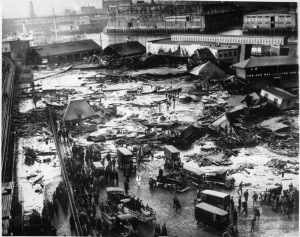 These days, most tsunami waves come with prior warning…at least since the 1946 wave that hit Alaska and Hawaii. Nevertheless, there are disastrous waves that are largely unpredictable, and those can be as deadly as the ones that the Pacific Tsunami Warning System warns people about. One in particular I had never heard of, until my sister Cheryl Masterson heard about it and mentioned it a few days ago. It happened in Boston, Massachusetts on January 15, 1919, and while it was of a very different variety than most tsunamis, it was deadly nevertheless. This tsunami was so strange, in fact, that most people wouldn’t even believe that this is a true story, but it did happen.
These days, most tsunami waves come with prior warning…at least since the 1946 wave that hit Alaska and Hawaii. Nevertheless, there are disastrous waves that are largely unpredictable, and those can be as deadly as the ones that the Pacific Tsunami Warning System warns people about. One in particular I had never heard of, until my sister Cheryl Masterson heard about it and mentioned it a few days ago. It happened in Boston, Massachusetts on January 15, 1919, and while it was of a very different variety than most tsunamis, it was deadly nevertheless. This tsunami was so strange, in fact, that most people wouldn’t even believe that this is a true story, but it did happen.
Around 12:40pm on January 15, 1919, a storage tank holding 2.3 million gallons of molasses exploded at the Purity Distilling Co. in the North End of Boston, sending waves of molasses rushing through the streets at almost 35 miles per hour. I’m sure that many people wouldn’t even think of this event as being at all dangerous, I mean after all, it’s just molasses. Nevertheless, a 25 foot high wave of molasses coming at you going 35 miles per hour is as deadly as being hit be a car. There was no warning, and in reality, there couldn’t 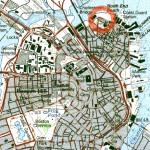 be. The molasses was being stored in the tank awaiting transfer to another plant and, due to its quickly rising temperature, it set off a tragic and previously unheard of chain of events. According to witnesses, the ground shook as if a tornado or freight train were coming down the street.
be. The molasses was being stored in the tank awaiting transfer to another plant and, due to its quickly rising temperature, it set off a tragic and previously unheard of chain of events. According to witnesses, the ground shook as if a tornado or freight train were coming down the street.
According to The Boston Globe, citizens “were picked up by a rush of air and hurled many feet.” A truck itself was picked up by the gushing wave and thrown into Boston Harbor. The force of the wave was so destructive, it almost tipped a railroad car off of Boston’s elevated railway tracks.” And The Boston Post described the gruesome scene, “Molasses, waist deep, covered the street and swirled and bubbled about the wreckage. Here and there struggled a form — whether it was animal or human being was impossible to tell. Horses died like so many flies on sticky fly-paper. The more they struggled, the deeper in the mess they were ensnared. Human beings — men and women — suffered likewise.”
The final death toll was set at 21, while 150 people were injured. The dead were either crushed by debris filled molasses, or drowned by the molasses itself. People and animals were seen struggling, some for which nothing could be done. The clean up was massive. Fire trucks were brought in to hose down the streets, and welders to 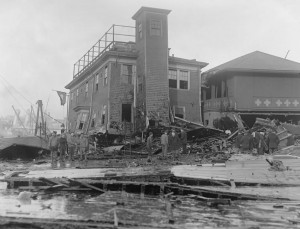 cut the tank up. The harbor was brown until summer. The molasses seeped into every crack, and it is said that on hot summer days, you could smell it for decades. I’m not sure how that could be, but maybe their minds played tricks in them too. In the end, the public outcry made a lawsuit necessary. The townspeople brought a class-action suit against the United States Industrial Alcohol Company, which had recently bought the Purity Distilling Company. Three years of hearings later, the USIAC was found guilty and forced to pay $600,000, which would equate to almost $10 million today, in settlements for negligence. The wave was as deadly as any tsunami could have been, but in reality, no warning could have prevented this tragedy.
cut the tank up. The harbor was brown until summer. The molasses seeped into every crack, and it is said that on hot summer days, you could smell it for decades. I’m not sure how that could be, but maybe their minds played tricks in them too. In the end, the public outcry made a lawsuit necessary. The townspeople brought a class-action suit against the United States Industrial Alcohol Company, which had recently bought the Purity Distilling Company. Three years of hearings later, the USIAC was found guilty and forced to pay $600,000, which would equate to almost $10 million today, in settlements for negligence. The wave was as deadly as any tsunami could have been, but in reality, no warning could have prevented this tragedy.
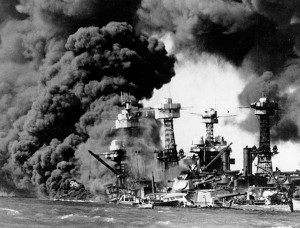
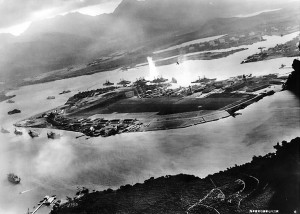 Located in the middle of Pearl Harbor is an island 335 acres in size. In Hawaii’s early days, it was known as Mokuumeume, meaning Island of Strife. It amazes me just how close that name is to the reality that is the island that is now known as Ford Island. I don’t think that strife is a constant companion of the island, but on this day, December 7, 1941…the date that will live in infamy, Ford Island was at center stage as one of the worst attacks in history took place on American soil. The participants, from the American side anyway, would have most certainly have chosen not to be there…if they had been given a choice. The island had changed hands several times, before finally ending up as a part of the military installation that was Pearl Harbor.
Located in the middle of Pearl Harbor is an island 335 acres in size. In Hawaii’s early days, it was known as Mokuumeume, meaning Island of Strife. It amazes me just how close that name is to the reality that is the island that is now known as Ford Island. I don’t think that strife is a constant companion of the island, but on this day, December 7, 1941…the date that will live in infamy, Ford Island was at center stage as one of the worst attacks in history took place on American soil. The participants, from the American side anyway, would have most certainly have chosen not to be there…if they had been given a choice. The island had changed hands several times, before finally ending up as a part of the military installation that was Pearl Harbor.
Every year, as Pearl Harbor Remembrance Day comes around, I try to write a story about that dreadful day, and this year, while looking at Pearl Harbor on Google Earth, my thoughts turned to that little island that was at the center of the attack. How must those men have felt? Everything happened so fast. There wasn’t even time to get the planes in the air. While the ships were being bombed around them, the pilots, mechanics, and airfield crew could only stand around watching…and dodging bullets. Of course, for most of them, that was impossible. The death toll that horrific day was 2403. In addition, there were 1178 people wounded. The emotional toll was beyond the imagination. This was the event that finally brought the United States into World War II.
I began to wonder what the people who were there were thinking as the events of the attack unfolded. There was no way to get off the island. If they had tried, they would surely have been killed. There were bombs going off on all sides of the island. Ships were sinking, airplanes were destroyed, and buildings were on fire or blown up. It was as if the world was coming to an end…or in reality, it was like waking up and finding yourself literally in Hell. My mind struggled to imagine how they must have felt…wishing and praying that all this was a dream and that they could be somewhere else…anywhere else. Still, they knew that it was real, and they were there, and 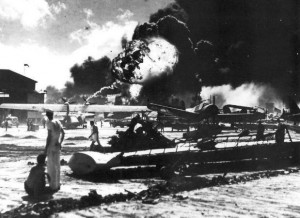
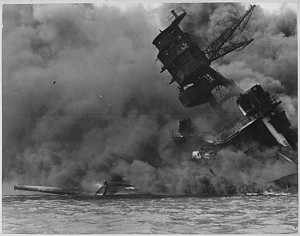 nothing would ever be the same again. They knew that the world as they had known it, had vanished…never to exist again. Of course, our country would come back from this attack, because we are a resilient people, but we would never be the same. We were less trusting of our enemies, something I see again in this day and age of terrorism, and something I think is important.
nothing would ever be the same again. They knew that the world as they had known it, had vanished…never to exist again. Of course, our country would come back from this attack, because we are a resilient people, but we would never be the same. We were less trusting of our enemies, something I see again in this day and age of terrorism, and something I think is important.
Being too trusting of our enemies in December of 1941, was exactly what paved the way for a surprise attack on December 7, 1941, and being too trusting today could do the same thing. It is imperative that we protect our people at all costs…even if it makes us seem heartless now. As in the case of the attack on Pearl Harbor, second chances at protecting our people don’t usually come. By the time we realize that we have made a mistake, it is too late, because it has become a fatal mistake. The men and women who survived the attack on Pearl Harbor knew first hand that our enemies hate us and want nothing less that death for America. That, I believe is the valuable lesson the people who survived that horrific attack took away that fateful day, and one we all need to seriously consider today.
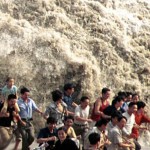 While watching the news concerning the earthquake in Japan, and the ensuing tsunami in Japan, Hawaii, and the US west coast this week, I am once again shocked and saddened by the chances people take. The people is Japan had virtually no warning, and so they couldn’t prepare for the tragic events that happened that awful day, but the man that was swept out to sea in California while taking pictures of the waves, knew the chance he was taking.
While watching the news concerning the earthquake in Japan, and the ensuing tsunami in Japan, Hawaii, and the US west coast this week, I am once again shocked and saddened by the chances people take. The people is Japan had virtually no warning, and so they couldn’t prepare for the tragic events that happened that awful day, but the man that was swept out to sea in California while taking pictures of the waves, knew the chance he was taking.
I’m quite sure that if the people in Japan had been able to get away, they would have. There simply wasn’t time, and as a result, many lives were unavoidably lost. My heart goes out to everyone affected by this tragedy. Those left behind have a monumental job ahead of them to rebuild in the midst of so much grief.
The people in Hawaii and the US west coast, had enough warning, however, and were told to stay away from the coast line. So why do we feel the need to go out there and get pictures of the event, simply to say we were there. My mind wanders to the thoughts going through the mind of that poor man being swept out to sea, knowing that his impending death was due entirely to his own foolish choices. Obviously, if he could do it all over again, knowing what he now knows, he would literally run in the opposite direction. I’m sure he thought of his loved ones toward the end, with much regret for putting them in a position of such grief. I know it was not his intent to end up this way, but the love of the all elusive historic photo to document the day, overtook his good sense concerning his own safety.
As I watched the footage, I saw a wave coming in to a Santa Cruz, California marina, and hitting the boats parked there. People were walking on the docks there! It was unbelievable! The reporter was saying that these people had been told not to be there, but once again the thought that “it won’t happen to me” kicked in and curiosity won out. Even if you aren’t swept away, getting caught between two colliding boats would take the same toll. People, please…think of your loved ones, if you can’t think of yourself. Please don’t take the risk. It isn’t worth it.

